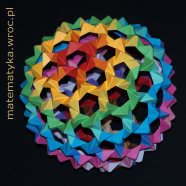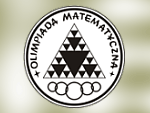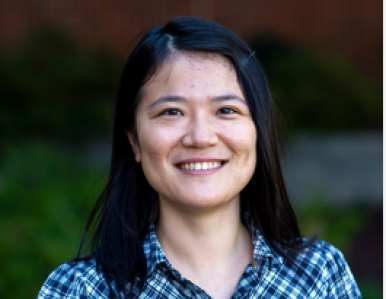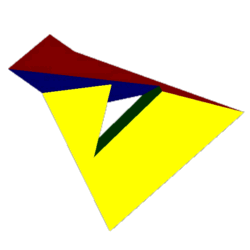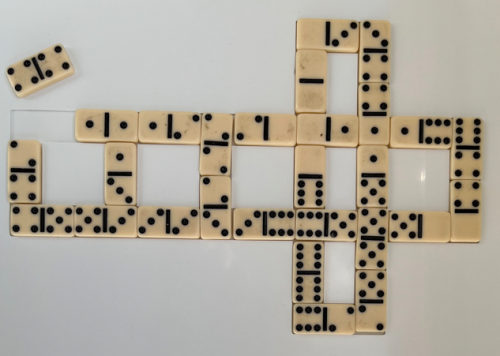Coraz więcej polskich studentów i nauczycieli bierze udział w rozmaitych międzynarodowych konferencjach, warsztatach i wymianach poświęconych nauczaniu matematyki. Jednym ze stałych punktów programu jest wówczas prezentowanie systemów edukacji obowiązujących w krajach, z których pochodzą uczestnicy. Aby pomóc w przygotowaniu takiej prezentacji, zamieszczamy jej przykładową wersję w języku angielskim. Dotyczy ona polskiego systemu edukacji i została przygotowana przez studentki matematyki z UWr na szkołę letnią Quality Class. Zachęcamy do wykorzystania poniższego materiału.
Prezentacja została przygotowana na ok. 30 minut. Opiera się na slajdach, które przejrzyście prezentują podstawowe zagadnienia związane z systemem edukacji w Polsce (z pominięciem szkolnictwa wyższego i specjalistycznego) oraz kształcenia zawodowego nauczycieli. Pomiędzy slajdami zamieszczono uzupełniające komentarze w języku angielskim, co dodatkowo powinno ułatwić przygotowanie własnego referatu. Należy pamiętać, że niektóre dane dotyczące organizacji systemu szkolnictwa szybko ulegają zmianom, warto więc je sprawdzić i zaktualizować. Gotową prezentację można ściągnąć, klikając tutaj.

The aim of this presentation is to give brief and general information about schooling system in Poland but it also gives an insight into academic education especially its teachers' training part. It provides some details on the organization of teaching and learning process at each educational level and a general view of the organization of school time.
There are two separate ministries of education in Poland: Ministry of National Education and Ministry of Science and Higher Education. The former is responsible for nearly whole educational system except for the academic education which is under the supervision of the latter ministry.
Schools in Poland are of two types: public and non-public. Public education is basically free of charge. Other important differences between public and non-public systems are exposed in the diagram.
Even though non-public schools seem to have better teaching and learning conditions than the public ones, they are often not highly valued as the schools for students with special individual, mental and educational needs, who are told not to be 'good enough' to get succesfully through public schools. However non-public schools undergo the same examination scheme and issue the same certificates as public ones.
The diagram below shows Polish educational system (except for special, vocational, adult and academic education).
Compulsory school education lasts from the age of 6 till the age of 18, however children have to attend one year pre-school education at the age of 5. Parents can also register their child for nursery school where they remain under care of nursery teachers. The "school age" does not mean the moment at which a child finishes 6 years but the whole "school year" during which it gains this age. It means that a child born in May starts going to school in September even if he or she is still undr six. The homeschooling system in Poland is permitted by the law although not advisible. Children undergoing this system have to pass assesement exams every year. After completing high school education and passing appropriate exams students are able to continue their education at the academic level.
Primary schools are divided into two stages each lasting for 3 years. The characterization of these two stages are listed in the slide below.
The early years education is a kind of bridge between the pre-school and the middle years education. Children have no regular lessons and they are learning mostly through fun activities, but in the same time they are being prepared to maintain school discipline, learn different subjects, get marks and undergo the achievement control. Activities usually take place in one classroom with only one teacher except for some specialized activities e.g. in sports or foreign languages. In the middle years stage of primary school pupils take part in regular lesson units lead by specialized teachers. Lessons of each subject take place in a special adequately equipped classroom. Pupils are organized in fixed group forms, the same for each teaching subject, and they have fixed common timetable for each day of a week during the whole school year. Parents have the right to decide whether their children attend religion or ethics courses as well as the course of 'family life education'.
The organization of the secondary school is more or less the same as the 2nd stage of primary school. It gives general education, however, there are some gymnasiums with forms providing specific profiles, e.g. mathematical, linquistic or Europe-oriented. The obligatory teaching subjects are listed in the slide below.
After completing secondary education the Polish student has to make a choice of a high school, depending on their preferences and abilities. There are several possibilities:
- general studies which provide a general education,
- technical studies which provide a general and technical education,
- general and vocational studies which provide general education and vocational training,
- vocational studies which provide vocational training only.
As vocational studies do not provide students with general education, one cannot apply for any university after completing them. However, students can carry on with their education, choosing supplementary general or technical studies and getting general education there. In fact, students who complete vocational studies start working immediately after school, for instance as a hairdresser, salesman or a baker. The diagram below shows the percentage of types of high schools chosen by Polish students in 2011.
As the general and vocational studies provide general education for students but do not give them a certificate that gives students an access to the job market (which vocational studies do), they are the least popular ones and are thought to get closed soon. There exist also schools for adults where one can complete the general education and a bunch of vocational courses for adults where they can acquire a certain job certificate.
In general the high school education is very similar to the secondary one as far as the organization of teaching and learning process are concerned. The list of obligatory subjects in all kinds of high school can be found in the following slide.
Moreover, there are always additional lesson units which are used in a way depending on the type of school.
In the slide below the admission criteria for each school level are presented.
There are no special entrance exams to any school level (including the academic one) except for exams in special abilities e.g. music or drawing in artistic schools. Parents and students are free to choose a primary and secondary schools themselves, but only the school closest to student's residence is obliged to accept them. However, students have to complete the education on previous stages and get the leaving pass. To get this they have to sit external exams. The certificate of secondary education together with the results of the gymnasium final exam decide about the admission to the chosen high school.
The baccalaureate exam is also an extermal exam and it is required by all academic institutions. At some special types of academic institutions or faculties there are additional admission requirements, e.g. for Fine Arts Academies.
There is no standardized assessment of the knowledge throughout the school year, thus teachers have freedom in preparing written or oral tests and grading. However, students have to write a compulsory assessment test/exam after each of the school type and also at the university. The assessment tests after each school level are presented in the following slide.
General Assessment Test after early years education is to be introduced since 2013. Students cannot fail the test after primary or secondary school. The results of these two tests are important during application to prestigious secondary or high schools respectively. All types of high school apart from Vocational Studies finish with Baccalaureate Exam in at least three subjects: Polish, Maths and a foreign language. Students can choose up to 6 additional subjects among taught courses. From the 2nd stage of primary school onwards students have to sit different kind of assessments at each subject. The grade scale is as follows:
- 6 = excellent
- 5 = very good
- 4 = good
- 3 = sufficient
- 2 = poor pass
- 1 = insufficient.
Often a grade with a plus sign is used to strengthen the grade obtained (or sometimes also a minus sign to weaken it).
The next two slides contain a characterization of the typical school year and a school day in Polish school.
The first diagram represents the school year 2012/2013. The blue boxes stand for days off school (weekends, holidays, festivals, etc.). The second diagram represents a typical timetable (1st year of gymnasium). Lessons last usually from 8:00 till 15:00 every day from Monday to Friday, but often students spend more time in school at some extra curriculum activities. Extra activities are free of charge and the choice depends on the possibilities of the school, facilities, teachers etc. Students usually choose among the following ones.
The last slide shows a typical school building.
Usually it consist of one or two 3-floor buildings and a separate gym or swimming pool that are connected by a corridor and there are also sport fields on the school territory. Seldom one building is used by several different schools.
There are few types of academic schools:
- universities,
- academies,
- higher technical schools (polytechnics)
- higher vocational schools.
Students can choose among full-time or part-time studies accompanied by e-learning courses. Full-time studies at public univerities are free of charge, students have to pay only for repeated courses. The first cycle of studies lasts 3 or 4 years and finishes with Bachelor or Engineer degree. At this moment young people can start a job or continue their education on the second cycle for two more years obtaining a Master degree. In some specific fields, such as medicine, law or directing, there are only master degree studies which last from 4,5 to 6 years. Students holding Master degree can apply for the 4-year long third cycle of studies - doctoral and obtain a doctorate.
The requirements for teachers are different at each educational stage. For nursery and early years stage a teacher has to complete the first cycle of studies in general education. For middle years of primary school teacher it is enough to graduate from the first cycle of studies (with a bachelor degree) in the specyfic teaching subject (e.g. maths) although it is possible to attain certificate to teach two different subjects. These studies can be completed at universities, pedagogical academies, vacational high schools or teacher training colleges. To be able to teach at the secondary or high school a teacher has to complete master studies in a secific discipline and obtain a master degree. These studies can be completed only at universities or pedagogical academies.
During their studies the future teachers have to:
- receive education in specific field,
- receive methodological education about the given subject,
- attend pedagogical and psychological courses,
- complete the teacher apprenticeship at a school of the given stage.
Moreover teachers should know a foreign language at least at the level B2 according to the Common European Framework of References for Languages and be computer literate.

